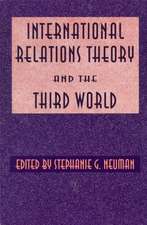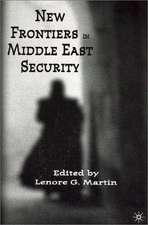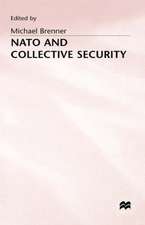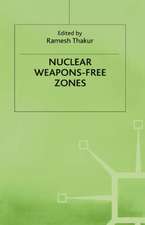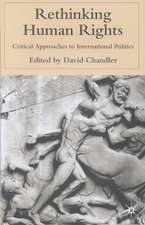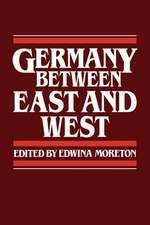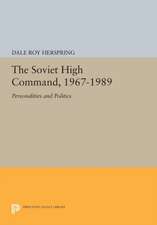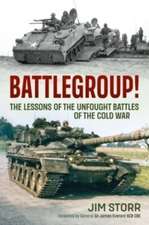The Bradley and How It Got That Way: Technology, Institutions, and the Problem of Mechanized Infantry in the United States Army: Contributions in Military Studies
Autor W. Blair Haworthen Limba Engleză Hardback – 29 noi 1999 – vârsta până la 17 ani
The mechanized infantry is one of the least-studied components of the U.S. Army's combat arms, and its most visable piece of equipment, the Bradley Fighting Vehicle, is one of the military's most controversial pieces of equipment. This study traces the idea of mechanized infantry from its roots in the early armored operations of World War I, through its fruition in World War II, to its drastic transformation in response to the threat of a nuclear, biological, and chemical battlefield. The U.S. Army's doctrinal migration from the idea of specialized armored infantry to that of more generalized mechanized infantry led to problematic consequences in training and equipping the force. Haworth explores the origins, conduct, and outcome of the Bradley controversy, along with its implications for Army institutional cultures, force designs, and doctrines.
Challenging traditional partisan views of the Bradley program, Haworth goes to the roots of the issue. The author details the mechanized infantry's problematic status in the Army's traditional division of roles and missions between its Infantry and Armored branches. While new conditions demand new equipment, old institutions and current commitments inevitably complicate matters; thus, traditional infantry considerations have driven the Bradley's requirements. The raw capability of the vehicle and the fortitude and ingenuity of its users have to some extent compensated for the conflicting pressures in its design. However, the reluctance of the Army to see mechanized infantry as a specialty has led to the problem the vehicle has faced, as this book clearly shows.
Din seria Contributions in Military Studies
- 24%
 Preț: 463.55 lei
Preț: 463.55 lei - 28%
 Preț: 438.00 lei
Preț: 438.00 lei - 24%
 Preț: 463.13 lei
Preț: 463.13 lei - 27%
 Preț: 438.59 lei
Preț: 438.59 lei - 28%
 Preț: 437.47 lei
Preț: 437.47 lei - 31%
 Preț: 437.84 lei
Preț: 437.84 lei - 28%
 Preț: 436.64 lei
Preț: 436.64 lei - 30%
 Preț: 556.53 lei
Preț: 556.53 lei - 30%
 Preț: 616.88 lei
Preț: 616.88 lei - 28%
 Preț: 435.88 lei
Preț: 435.88 lei - 30%
 Preț: 571.34 lei
Preț: 571.34 lei - 38%
 Preț: 439.44 lei
Preț: 439.44 lei - 24%
 Preț: 461.52 lei
Preț: 461.52 lei - 28%
 Preț: 438.07 lei
Preț: 438.07 lei - 24%
 Preț: 461.87 lei
Preț: 461.87 lei - 28%
 Preț: 462.20 lei
Preț: 462.20 lei - 28%
 Preț: 362.29 lei
Preț: 362.29 lei - 30%
 Preț: 494.84 lei
Preț: 494.84 lei - 24%
 Preț: 463.97 lei
Preț: 463.97 lei - 24%
 Preț: 461.35 lei
Preț: 461.35 lei - 24%
 Preț: 463.72 lei
Preț: 463.72 lei - 37%
 Preț: 511.48 lei
Preț: 511.48 lei - 24%
 Preț: 460.43 lei
Preț: 460.43 lei - 28%
 Preț: 436.80 lei
Preț: 436.80 lei - 28%
 Preț: 436.40 lei
Preț: 436.40 lei - 28%
 Preț: 462.37 lei
Preț: 462.37 lei - 35%
 Preț: 458.04 lei
Preț: 458.04 lei - 28%
 Preț: 462.28 lei
Preț: 462.28 lei - 27%
 Preț: 463.38 lei
Preț: 463.38 lei - 27%
 Preț: 638.85 lei
Preț: 638.85 lei - 27%
 Preț: 465.68 lei
Preț: 465.68 lei - 24%
 Preț: 461.77 lei
Preț: 461.77 lei - 27%
 Preț: 439.17 lei
Preț: 439.17 lei - 27%
 Preț: 440.53 lei
Preț: 440.53 lei - 35%
 Preț: 460.76 lei
Preț: 460.76 lei - 28%
 Preț: 437.57 lei
Preț: 437.57 lei - 28%
 Preț: 468.66 lei
Preț: 468.66 lei - 24%
 Preț: 463.64 lei
Preț: 463.64 lei - 24%
 Preț: 464.57 lei
Preț: 464.57 lei - 23%
 Preț: 492.54 lei
Preț: 492.54 lei - 24%
 Preț: 462.87 lei
Preț: 462.87 lei - 27%
 Preț: 465.68 lei
Preț: 465.68 lei - 27%
 Preț: 439.51 lei
Preț: 439.51 lei - 27%
 Preț: 346.25 lei
Preț: 346.25 lei - 27%
 Preț: 500.43 lei
Preț: 500.43 lei - 27%
 Preț: 617.60 lei
Preț: 617.60 lei - 18%
 Preț: 355.91 lei
Preț: 355.91 lei - 27%
 Preț: 682.72 lei
Preț: 682.72 lei - 28%
 Preț: 362.72 lei
Preț: 362.72 lei
Preț: 592.75 lei
Preț vechi: 850.19 lei
-30% Nou
113.42€ • 118.74$ • 93.85£
Carte tipărită la comandă
Livrare economică 07-21 aprilie
Specificații
ISBN-10: 0313309744
Pagini: 224
Dimensiuni: 156 x 235 x 20 mm
Greutate: 0.53 kg
Ediția:New.
Editura: Bloomsbury Publishing
Colecția Praeger
Seria Contributions in Military Studies
Locul publicării:New York, United States
Notă biografică
Cuprins
Descriere
The mechanized infantry is one of the least-studied components of the U.S. Army's combat arms, and its most visable piece of equipment, the Bradley Fighting Vehicle, is one of the military's most controversial pieces of equipment. This study traces the idea of mechanized infantry from its roots in the early armored operations of World War I, through its fruition in World War II, to its drastic transformation in response to the threat of a nuclear, biological, and chemical battlefield. The U.S. Army's doctrinal migration from the idea of specialized armored infantry to that of more generalized mechanized infantry led to problematic consequences in training and equipping the force. Haworth explores the origins, conduct, and outcome of the Bradley controversy, along with its implications for Army institutional cultures, force designs, and doctrines.
Challenging traditional partisan views of the Bradley program, Haworth goes to the roots of the issue. The author details the mechanized infantry's problematic status in the Army's traditional division of roles and missions between its Infantry and Armored branches. While new conditions demand new equipment, old institutions and current commitments inevitably complicate matters; thus, traditional infantry considerations have driven the Bradley's requirements. The raw capability of the vehicle and the fortitude and ingenuity of its users have to some extent compensated for the conflicting pressures in its design. However, the reluctance of the Army to see mechanized infantry as a specialty has led to the problem the vehicle has faced, as this book clearly shows.





